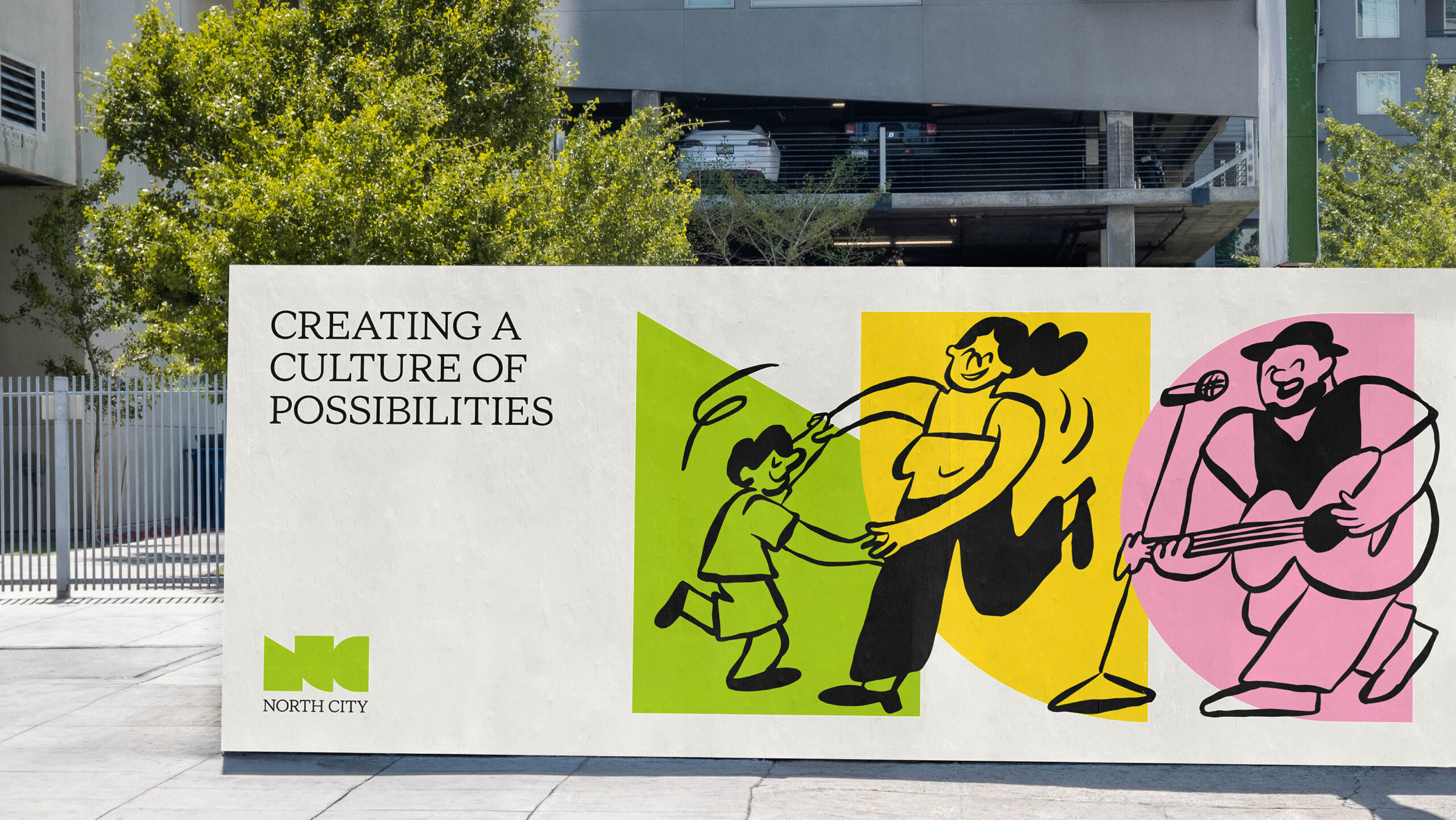
Here are some mind-shifting stats that prove the impact of culture on a place's economy, helping us all change the conversation around culture from nice-to-have to must-have.
We have recently launched the brand for an exciting new Southern Californian city being delivered by Sea Breeze Properties called North City. Unlike the stereotype of an American city, North City San Diego is dense and walkable, meaning the stage is set for it to be the kind of city we love — a place full of culture, where streets are animated by the theatre of everyday life.
As part of our work on North City, we’ve been collaborating with New York-based culture experts DVDL — who shared two recent examples that demonstrate the too-often overlooked connection between culture and value in action. And we wanted to share them with you:
First, in Indiana, the eight-mile-long Indianapolis Cultural Trail rewarded the community not just with fun recreation, but with improved transportation and safety. Incredibly, the value of land parcels near the trail increased by $1bn in just six years.
Second, over in Florida, developers spent $1.2m on building out the Wynwood Arts District in Miami, which generated $590m as the area welcomed 1,700 residents and six million visitors, supporting over 8,000 jobs.
We should all be taking inspiration from Miami, Indianapolis and other cities adding value to their places through culture. At North City, we stand out in the local market with a positive inspiring story that asks what if? — What if art is for everyone, everyday? It encapsulates this place’s culture of possibilities that firmly distinguishes itself from the sea of strip malls and single-visioned suburban neighbourhoods that surround it.
Now, its evolving public arts programme of public sculptures, 100-foot murals and citizen art classes will be the backbone of its offer, rather than a late dressing. The ability to create distinction is the real secret behind culture’s power to raise place value.
History shows us how miraculous culture can be to older places in need of recovery too. When the Guggenheim Museum in Bilbao turned a declining industrial city into a site of cultural pilgrimage — and went on to welcome 20 million visitors in 20 years — the idea of using a cultural institution to supercharge an economy actually became known as the Bilbao Effect.
We come to cities because we’re seeking inspiration and connection, opportunities and big ideas. Culture nurtures and powers this — it’s a two-way street and we need to invest in culture for it to do this.
"The ability to create distinction is the real secret behind culture’s power to raise place value."
These examples show that it’s in all our commercial interests to double down on culture, because it will pay you back. And though you might not have a Guggenheim at the heart of your masterplan, we believe every place has some kind of cultural magic waiting to be unlocked.